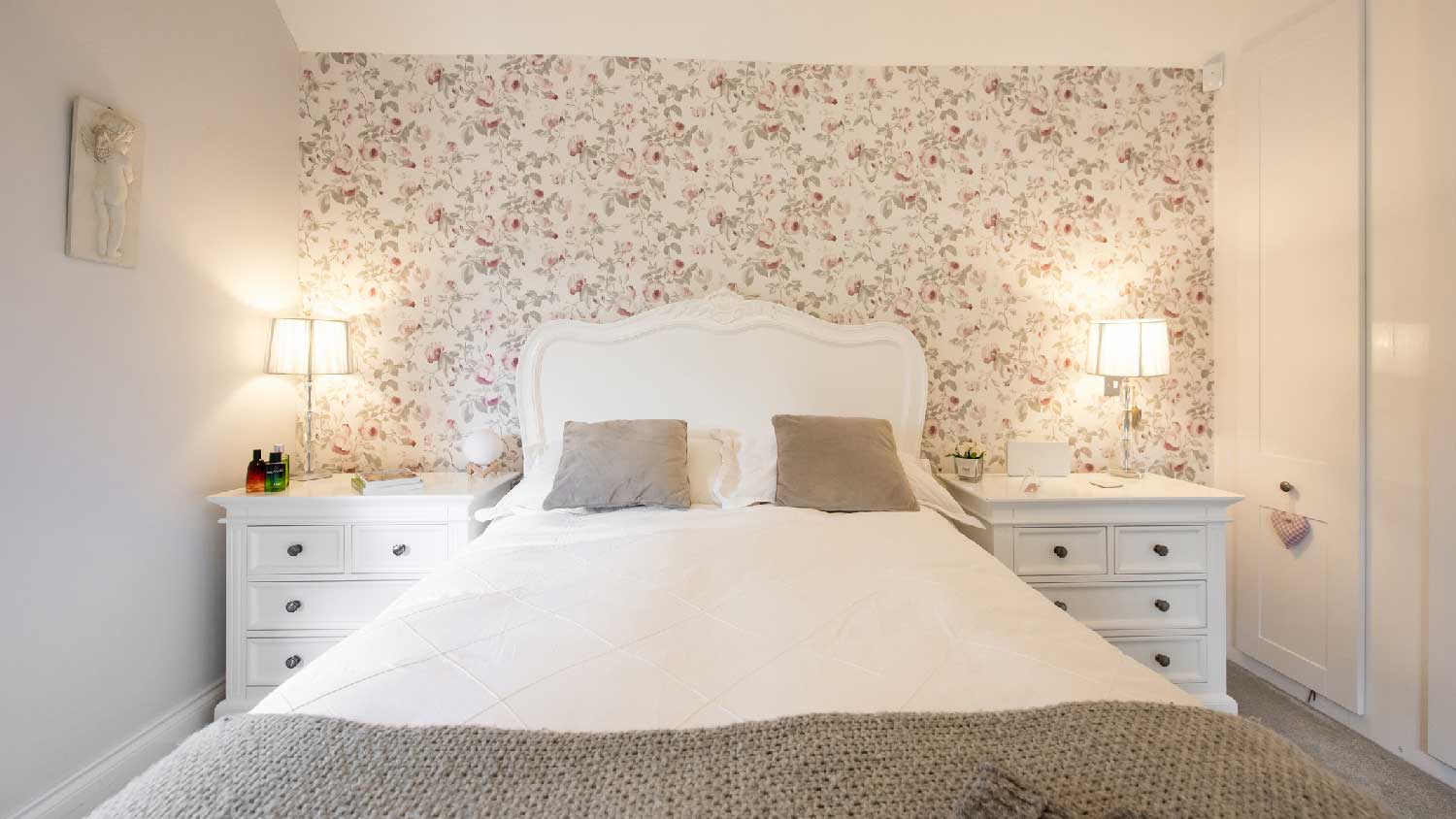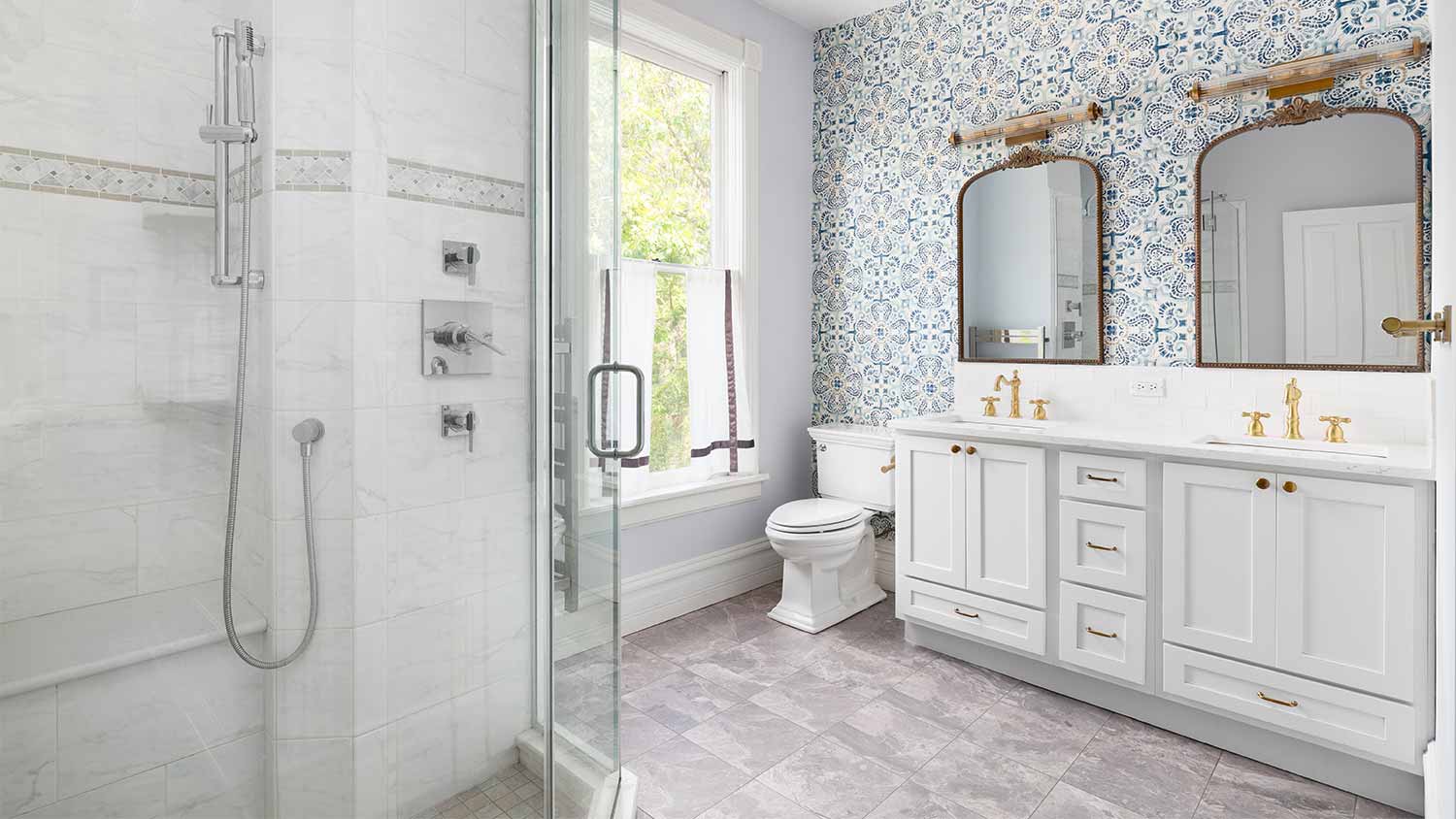Tear Down a Wall Safely in Just 7 Steps
Turn your outdated and closed-off home into a modern, open space


- Pry bars
- Utility knife
- Stud finder
- Hammer or sledgehammers
- Reciprocating saw with a demolition blade
- Plastic sheeting
- Drywall
- Drywall compound
- Drywall tape
- Drywall screws
Open floor plans are a must-have for many homeowners. If you want your home to feel more spacious with clear sightlines, you may want to consider removing an interior wall. This update can transform your home by unblocking natural light and making the space more inviting.
But before swinging the sledgehammer, review these tips to learn how to knock down a wall safely—and figure out when it’s a good idea to call in a pro.
7 Steps to Tearing Down a Wall Safely
Determine if Your Wall is Load Bearing
Before deciding to tear down a wall, you need to determine if it helps support the weight of your home. Load-bearing walls are necessary for your home’s structural integrity.
Here are ways toidentify a load-bearing wall:
Runs perpendicular to floor joists and is located in or near the center of your home
Connects to the foundation—you can see steel beams directly underneath the wall from a basement or crawlspace
Connects to the truss
Measures 6.5 inches or more wide
Sometimes it’s difficult to determine if the wall is load-bearing, so it’s always best to call in a professional when in doubt.
If your wall is not load-bearing, you can proceed to step two of this project.
If it is load-bearing, you need to consult with a structural engineer. Tearing down a load-bearing wall is a more advanced job. A structural engineer will add support and reinforcements to ensure your house is structurally sound. Be sure to check with your local building department, and some municipalities may require building permits. A structural engineer will also be able to help you obtain the required permits.
When budgeting for your project, consider the cost of demolishing a load-bearing wall and the extra steps it entails. To give you an idea, demolishing a non-load-bearing wall will run between $300 to $1,000, whereas aload-bearing wall will cost between $1,200 to $3,000 to demolish and up to $10,000 for multi-story homes.
Protect Yourself
Before demolishing a wall, you’ll want to put on protective gear like long pants, safety goggles, gloves, and a respirator mask to protect yourself from dust particles, as well as broken studs and hammer swings.
Find a buddy to help you—this project is easier with at least two people.
Demolishing a wall—even a non-load-bearing one—is an advanced-level DIY. Don’t be afraid to call a local contractor if you feel the job might exceed your skill level.
Find Out What’s Inside Your Wall
Check if the wall contains any plumbing, electrical wires, or HVAC. If present, it may mean additional pre-demo steps are necessary, such as rerouting pipes, disconnecting wires, and relocating vents.
Plumbing
Check upstairs to see if there’s a bathroom on either side of the wall that could potentially have pipes in it. You will also want to investigate vents and crawl spaces to see if there are any pipes or plumbing present.
If you find any plumbing pipes running within the wall, you’ll likely need to hire a plumber to remove and reroute them.
Electric
Check both sides of the wall. If you can see any outlets, it contains electrical wiring.
Turn off power to all electrical circuits by switching off the breakers in your panel box. Remove the outlet or switch and pull the device away from its electrical box. Carefully detach the wire from the wall before demolishing the wall. Alternatively, if you feel more comfortable having a pro help with this step, call an electrician to help you safely remove any electrical wiring.
Asbestos
If your home was built before 1980, you might want to identify if your house has asbestos and take proper precautions. Hiring a professional is the safest option to ensure the job is taken care of correctly and without any code violation.
Prepare for Demolition
Once you have evaluated the wall, it is time to prepare your space. Protect the rooms on both sides, and the rest of your home, by taking the following precautions
Lay down a drop cloth or a sheet on the floor. Plywood panels will protect hardwood, ceramic tile, or other fragile flooring types.
Cover vents, windows, and other fixtures using plastic sheeting and tape to protect from debris.
Use tape and plastic sheeting or cloth to create a partition between any other rooms.
Begin Knocking Down the Wall
Now, it’s time for the fun part. Follow the steps below for a seamless wall demolition process:
Use your utility knife to cut through paint between the wall, ceiling, and surrounding walls. Cut through the caulk between trim work with the utility knife.
Remove any doors, trim work, and baseboards with your pry bar and hammer.
Use a stud finder to locate studs.
With your sledgehammer, punch a small starter hole between the studs. Remove a small section of the drywall to observe any possible wires, pipes, or ductwork in the wall. If it’s clear, continue with a reciprocating saw, cutting through the drywall. Pull the drywall down with your hands to remove the pieces. Be careful not to cut through any remaining wiring, pipes, or ductwork inside the wall.
Repeat the process until all drywall on the first side of the wall is removed.
Remove any insulation—although it’s unlikely for interior walls to contain insulation.
Repeat the process on the other side of drywall—it’s easier to stand on the already-demolished side because you can see where the studs are.
When you’re done removing pieces of drywall, take all the debris to the dumpster before moving on to the next step. Additionally, remove nails from wood panels to avoid any safety hazards.
Remove Wall Studs and Plates
Now with the drywall gone, you can clearly see the studs of the wall.
Cut through the bottom of each stud horizontally using a reciprocating saw, then tug each stud towards you and pull it out of the wall.
Remove the wall plates—the last stud on either end of the wall—by running a saw between the stud and the beam. Once the nails are cut, pull the stud from the wall using a pry bar.
Remove the top and base plates using the pry bar and hammer. Once you’ve removed all studs and plates, be sure to remove any nails or nail pieces left behind.
Patch the Ceiling and the Floor
Now that the wall has been demolished, there will be gaps in the wall, ceiling, and floor where the plates used to be.
To patch the ceiling or the wall, follow these steps:
Insert wooden strips across the hole and be sure to secure it in place using drywall screws.
Cut the area with a utility knife to match a new drywall section to fill the gap. Add the new drywall piece and secure it in the wooden strips or studs using drywall screws.
Using a pry knife, spread drywall mud over edges and screws. Scrape the area to get rid of any excess compound. When it’s dry, sand the area to make sure it’s completely smooth. Repeat until completely smooth.
Paint the area with the same color as the wall or ceiling to match the existing look. You may need to repaint the whole area to make it look flawless.
Floors are difficult to patch between two rooms, especially if you have two different materials. If you want a seamless look, you may need to hire a professional to repair the hole or install new flooring.














